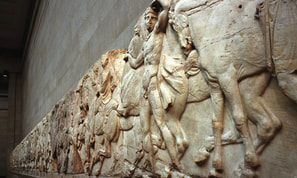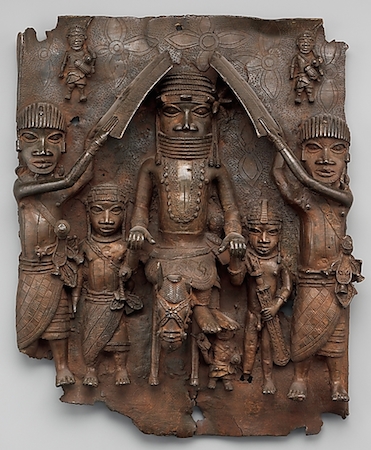|
I firmly believe that to be a good teacher you have to constantly question your practice. Over the last year, I've been questioning how my teaching supports equity - which I see as creating equal opportunity for all students in the classroom. For me - and, just to be clear, I'm only going to address my personal experience here - to understand how to support equity in my classroom I have to examine what makes it unequal. A big part of that is the legacy of colonization on both visual art and on schools.
What I learned in that class was impactful and important, but so much that I needed to know as a teacher was missing. As a new teacher I felt pressure to teach about the important artists I'd learned about and there didn't seem like there was room for much else. I also included art from non-western cultures in my teaching, but I did not have the understanding or breath of knowledge to do it well. Additionally, the art we did learn about was an incomplete story. We talked about Greek art, for example, but not about how so much of it ended up in the British Museum when Lord Elgin literally sawed freizes off the Parthenon while Greece was under occupation. We learned about great white, male artists - but not about the societal barriers that kept women from participating in the arts. We certainly didn't learn about the women who, against all odds, were there. Years later, things are changing. Places like Greece, Nigeria and Rapa Nui (Easter Island) have been asking for art that was taken under colonial rule to be given back for decades. In the last month, first the French government, then the British have agreed to give back the Benin Bronzes to Nigeria. These works of art were taken from the Edo people of Benin in 1897 when the British sacked Benin city, destroyed the royal palace and looted the kingdom's vast wealth - including over 2,500 works of art that can be found today in museums around the world. Addressing colonialism in the classroomPart of legacy of colonialism is that the history of art taught in schools is skewed towards Western Art, mostly made by white males. This isn't a fair picture of art history. Fortunately, curriculums like AP Art History, which I use my art history classes, now have a global focus. In my visual arts classes I make sure to give my kids access to diverse art by following my rule of 3; for every white male artist I show, I show two artists who are not. This was hard when I first started doing it, but it seems easy now because contemporary art is truly global. In this image, from an article I wrote for the Art of Education, you see an example of my rule of three. Image 1 is Caravaggio, image 2 is his near contemporary Artemisia Gentileschi and image 3 is by contemporary artist Kehinde Wiley. All three works are versions of the same subject - the biblical story of Judith and Holofernes. Studying all three points of view together adds depth and meaning. Including more than western art in the classroom is a good first step, but I've realized to truly address equity in my classroom I need to also teach about the issues that make our society unequal. So when I talk about Greek art I talk about the achievements of Greek democracy, but I also talk about the women and non-citizens who were left out. When my art history class learns about African art we learn about objects and culture, but we also talk about how many of those objects ended up in western museums. My job is not just to teach students to appreciate, but to understand and to question - that includes the legacy of colonization. We have to address it to move past it.
4 Comments
12/1/2018 05:10:43 am
Melissa,
Reply
Shannon
12/8/2018 05:03:17 am
Rachel stole my entire question! I struggle to know to present my students art history. Currently I use the Canvas LMS, and the reflect in an essay form.
Reply
Alex Mann
12/1/2018 07:48:38 am
Melissa! I didn’t know you had a blog - what a lovely surprise. I love your concept of “3.” I’m sure your students really appreciate the opportunity to compare and discuss!
Reply
BArbara Hughes
12/1/2018 10:08:06 am
Well stated! Thank you Melissa for clearly and concisely "putting this out there", keep up the good work.
Reply
Your comment will be posted after it is approved.
Leave a Reply. |
Mrs. PurteeI'm interested in creating a student student centered space for my high school students through choice and abundant opportunity for self expression. I'm also a writer for SchoolArts co-author of The Open Art Room. Archives
December 2019
Categories
All
|



 RSS Feed
RSS Feed
